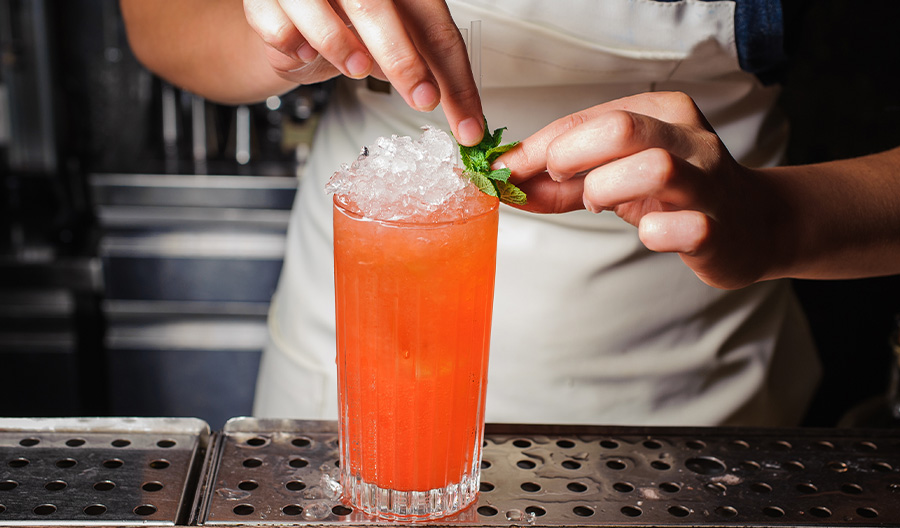Your password was successfully updated. Thank you.
Your password has been reset.
Your password is expiring today.
Your password will expire tomorrow.
How to Build a Balanced Cocktail Menu
Written by Proof Content Team
|
Published on July 02, 2024
While it may be true that you can’t please everybody, a well-balanced cocktail menu can get you close. Here’s how to put together a great cocktail menu that will cater to a variety of tastes and align with your individual business’s needs and personality.
Before You Begin
We know you’re probably keen to start dreaming up drinks, but there are a few key variables to consider before you dive in.
First and foremost, it’s essential to have a solid understanding of your core clientele. Are they adventurous trendsetters looking for something new and exciting? Regulars coming in for the usual? Are they young or old, hip or chill, quirky or mainstream?
Whoever they are, they need to be kept top-of-mind throughout your menu planning. If you need more clarity, take a look at your sales data to uncover any patterns and get a better understanding of what’s selling (and what isn’t). This is a valuable practice even if you think you know your customers well — you might be surprised by what you find.
Next, you want to take your establishment’s unique personality into account. A casual, family-friendly restaurant is going to need a very different drink menu than a swanky craft cocktail bar or line-out-the-door nightclub. Knowing who you are as a business will allow you to shape your drink menu in a way that reflects your vibe and gives your customers a consistent experience with your brand.
Lastly, don’t forget about your physical space. You’ll need ample space for a cocktail menu full of specialty produce or fussy, labor-intensive syrups or garnishes. Make sure the drinks you offer are ones your staff will be able to reproduce consistently and quickly within the parameters of your particular set-up.
Building Out Your Beverage Menu
Once you have a solid sense of who you’re serving, your business’s personality, and how you can efficiently meet demand, it’s time for the fun part! To keep things balanced as you build out your cocktail menu, be sure to:
1. Include a good cross section of spirits
Unless you’re a bourbon bar, you’ll want to incorporate a range of base spirits to add variety to your menu. As an example, this might look like having a vodka cocktail or two, a couple of gin drinks, two to three whisky drinks, one or two tequila or mezcal cocktails, and a couple of rum options.
2. Balance your flavor profiles
Just as the flavor profiles in an individual cocktail need to be in balance, so do the choices on your menu. Make sure to include cocktails that showcase a range of sweet, sour, bitter, fruity, herbal, or spicy notes. This ensures you can accommodate many different palates — aka the different personalities that give life to a thriving establishment.

3. Offer a variety of cocktail styles
Generally speaking, you don’t want your menu dominated by one particular cocktail style, as it can make your menu feel monotonous and make it hard for customers to differentiate between drinks. To avoid this situation, work in a couple options from each cocktail category—stirred, sours, highballs, fizzes, and aperitifs.
4. Incorporate classic and signature cocktails
A well-balanced menu offers a mix of familiar favorites like Margaritas, Old Fashioneds, Mojitos, etc., as well as signature drinks that reflect your business’s unique style and expertise. Having both on your menu will keep your customers happy, whether they’re devoted to the classics or looking for something new or adventurous.
5. Consider seasonal ingredients
A cocktail menu shouldn’t be a one-and-done, static thing; it needs to evolve and change. Incorporating seasonal ingredients keeps your menu fresh and exciting while meeting customers’ changing preferences.
6. Don’t overlook non-alcoholic options
According to NielsenIQ, the market for nonalcoholic spirits, wine, and beer has grown 120% in the last three years, and mocktails and spirit-free cocktails continue to gain popularity. Rather than making your bartenders figure out how to make alcohol-free cocktails on the fly, incorporate a couple of well-crafted booze-free options into your menu.
7. Think Clean and Curated
Your cocktail menu doesn’t need to be a million miles long. Aim for a cleanly curated, well-rounded drink selection that won’t bog your customers down with decision anxiety, so they can focus on what matters most: enjoying their experience at your establishment.
Remember, a balanced cocktail menu offers variety, caters to different tastes, and provides options for both classic enthusiasts and those seeking innovative creations. By considering these steps and experimenting with flavors, you can create a cocktail menu that is enticing, well-balanced, and reflective of your establishment's style.

